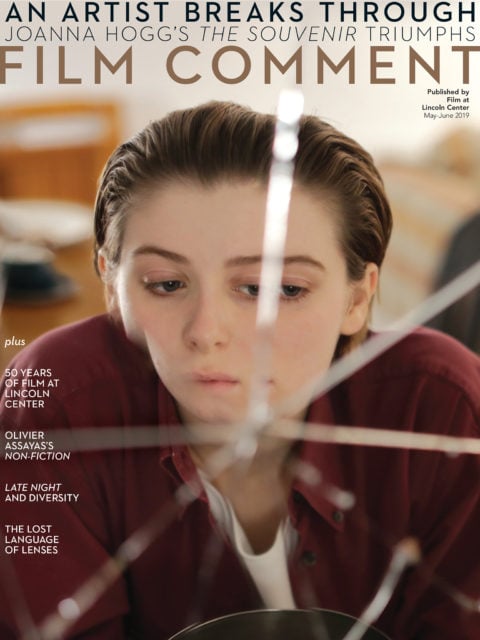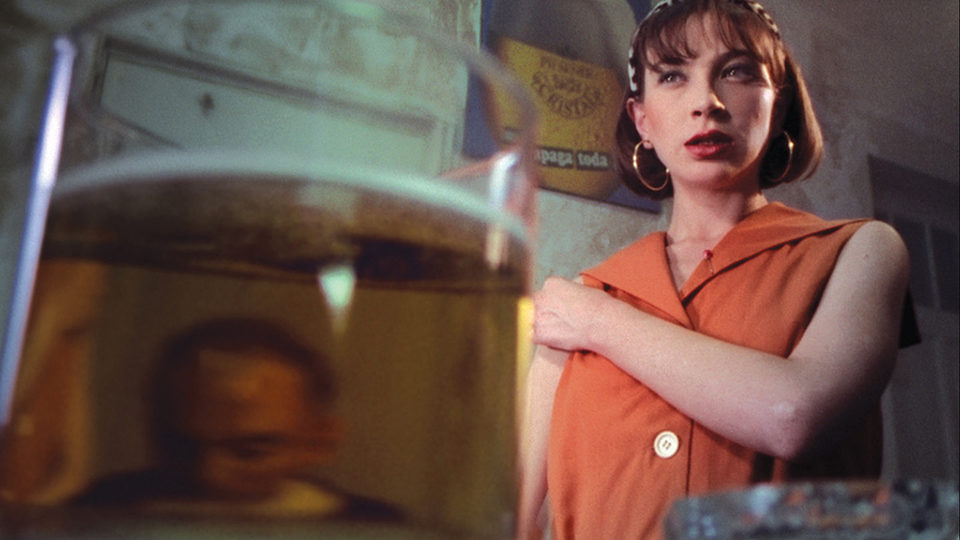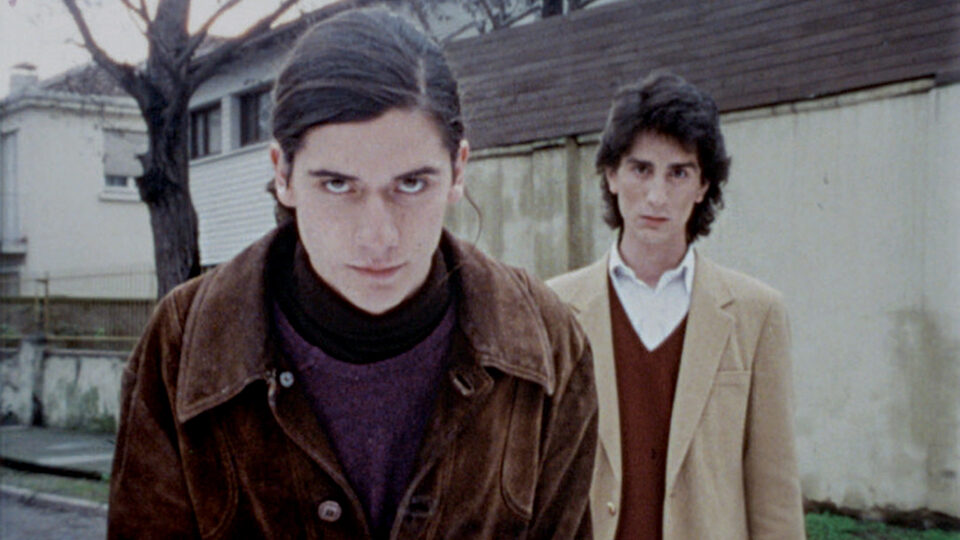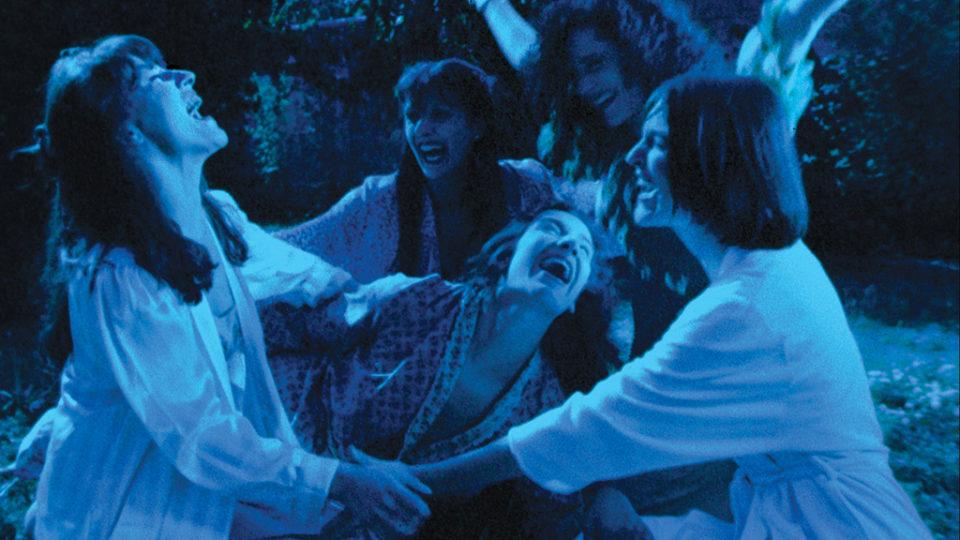By Galut Alarcón in the May-June 2019 Issue

Art and Craft: Recovering a Film (and a Nation)
Editor Galut Alarcón retraces the path of Raúl Ruiz’s unfinished The Wandering Soap Opera and its reconstruction

From the May-June 2019 Issue
Also in this issue
As told to Manu Yáñez Murillo. This is an extended version of an article that appears the May-June issue of Film Comment.
I first knew about Raúl Ruiz through my father, Luis Alarcón, who was a regular member of the cast of Raul’s movies from the 1960s, before Pinochet’s coup d’état in 1973. When I was a kid, my father didn’t tell me fairy tales. Instead, he talked to me about a friend who had gone into exile, a friend with an exceptionally good memory, who wrote songs and poems, and who made movies open to improvisation. Those were my bedtime stories, wherein my father portrayed his mysterious friend as a sort of wizard, or a shaman, a typical figure in Chilean mythology. And then, one day, this friend came back to Chile and made a movie called The Wandering Soap Opera (La telenovela errante), in which my father played a part. That’s how I finally met Raúl Ruiz.
Raúl came back from exile in 1983. He was a very prolific artist, but in Chile he suffered from a terrible creative block. While traveling abroad, ideas emerged everywhere, but every time he was back “home,” the block, a giant void, reappeared. Then, in 1990, he decided to shoot The Wandering Soap Opera in Chile; it was a film-experiment shot in barely six days as part of a directing workshop. At the time, Chile was trying to leave behind the smell of the army’s bullets—a plebiscite put an end to Pinochet’s dictatorship in 1988—and there was a thirst for freedom, excitement in the streets, people trying to be creative again. And Raúl had the strange idea to make a movie with almost no budget, extremely fragmentary, and with notes instead of a traditional script. It was punk cinema.

The Wandering Soap Opera (Raúl Ruiz, 1990/2019). Courtesy of Cinema Guild
The expectations were colossal. Every actor wanted to be in The Wandering Soap Opera. Directors came to “learn” from Ruiz, although his method was the least systematic thing you could imagine. I was 18 back then, and he decided to make me act in a scene. He handed me a piece of paper with some enigmatic lines. I read them and asked him for some guidelines about the scene and about my character. He looked at me, suspicious, and told me: “Okay, so you want clarity.” Then he just ran away very fast and went around the next corner. After 10 minutes or so, with all the cast and crew waiting for him, he showed up running again, came to me gasping and said: “Okay, I just put all my effort into this explanation. Let’s shoot!” That was Raúl, constantly breaking the logic of things, searching for bursts of creativity and spontaneity.
After the shoot, nobody—except Raúl—saw a single frame of the movie… until we embarked on the reconstruction. Over the years, I kept asking my father about the film, but he didn’t know a thing. Once I met Raúl on the streets of Santiago, we sat down to have a glass of wine and I asked him about The Wandering Soap Opera. He said the movie was “pasted,” a Chilean expression for “bound,” meaning it was blocked. Raúl shot around 120 projects in his life, between features, shorts, and TV series, and this was one of the very few he left unfinished.
After Raúl died in 2011, along with Chamila Rodriguez—my wife, Raúl’s muse for his last Chilean films and the executive producer of The Wandering Soap Opera—and I decided to organize a partial retrospective of Raúl’s films in Santiago. It was a success, with many sold-out screenings. One day, at a post-screening cocktail, a man called Pablo Martínez, a huge fan of Raúl’s work, came up and told me he had shot a making-of documentary of The Wandering Soap Opera with his Hi8 camera. I was shocked. He showed me the rushes and we started editing the material. Then, just two months later, I was informed by the Chilean cinematheque that Isabel Barriga—the widow of Roberto Chignoli, an advertisement producer and friend of Raúl’s who acted in The Wandering Soap Opera—had donated several cans of unidentified film stock. This was 2015; I went to the cinematheque and could certify that they had 20 color reels of The Wandering Soap Opera. It felt as if the movie was calling us—all very much “Ruizian”! Then I contacted Raúl’s widow, the filmmaker Valeria Sarmiento, and told her about the discovery. She didn’t know much about the movie because at the time of the shoot she wasn’t much involved in Raúl’s projects, but she became very interested in trying to restore or reconstruct the film, something that seemed almost impossible given that we only had 20 of the 26 original reels and that we had no soundtrack.

Galut Alarcón (left)
That’s when the investigation began. I first contacted the three sound technicians who worked at The Wandering Soap Opera and asked them if they had audio files from around the time of the shoot. One of them had five audio tapes that took me a year to restore and listen to. I was ecstatic, thinking I had found the soundtrack, but they were from another movie. Then we found out that Raúl had donated a lot of material to the David M. Rubenstein Rare Book & Manuscript Library at Duke University, and there we found a work print of The Wandering Soap Opera. For that cut—which was four and a half hours long—Ruiz synchronized his favorite shots with the corresponding sound in order to transcribe the mostly improvised dialogues and have a “script” with which to apply for funding from a French or European source. In that application—which we found in France—The Wandering Soap Opera was presented as part of a trilogy titled What Is Chile? that was never actually made. The decade of the 1990s was one of the most productive periods of Raúl’s career. He was making two or three features every year, so when the idea of the trilogy didn’t come along, he went on to the next thing.
The sound from that work print was not good, but with the help of Craig Breaden from Duke—who has been a sort of guardian angel for this movie—we created a system to clean that audio. That’s how we got the sound and the six reels missing from the Chilean material. In the end, the reconstruction of The Wandering Soap Opera became a three-continent endeavor, a combination of the 20 Chilean reels, the making-of—which provided us with a couple of takes we included in the final cut—the French script, and the American work print.
In the process of reconstructing the film, we had to shoot new material to complete the movie’s intricate structure. In The Wandering Soap Opera, Raúl played with the notion of a meta-dialogue between different soap operas. In some scenes, characters look at the camera and start conversing with other characters in another layer of fiction, creating a mise en abyme. This made the process quite difficult, as the movie felt like a puzzle with missing pieces. In this sense, we were lucky to find a shooting script kept by the actor Mauricio Pesutic, who was Raúl’s assistant director here. In that script, there were cues indicating several cuts “to a TV showing the soap opera.” We guessed Raúl didn’t shoot the scenes of TVs showing the soap operas because at that time it wasn’t easy or cheap to insert images onto a TV screen in postproduction. So Valeria decided to shoot those scenes to interconnect the different fictions of The Wandering Soap Opera. Raúl was fascinated by what he called the “fictional jelly”—an idea that encompassed the end of the collective experience of watching images and the birth of a no place where images were consumed individually. The perfect representation of that idea would be an airplane with screens in every seat, all of them showing different TV shows or TV series or movies at the same time. The Wandering Soap Opera is an insightful exploration of this idea.
Regarding the thematic core of the film, there’s a very significant scene that we had to leave out of the final montage because the film negative was damaged, and also because there were some technical problems involved in the actual shooting of the scene, probably as a result of the pedagogical nature of the shooting. The scene happened inside a giant hole in the ground, a pothole made for the construction of one of the first shopping malls in Santiago. It was a demented scene with a group of construction workers walking around a delirious man who was searching for a spiritual cure to his malaise. The situation was narrated by a sports commentator who described the “divine” healing as if it was a soccer match. The scene was pure Dadaism, with a symbolic critique of the building of a brand-new Chile, the rebirth of a nation under the forces of capitalism and globalization. Without falling into propaganda or into didacticism, The Wandering Soap Opera describes how the increasing shallowness of a society ends up defining the essence of its national identity. The movie portrays a country devoid of any cultural, artistic, or political discourse, a country without critical apparatus. The film is full of characters who don’t stop talking but who say nothing. This was made more than 25 years ago, but it feels very contemporary. At the same time, in today’s world, where nationalism seems to be erupting everywhere, it’s very interesting to see The Wandering Soap Opera as a vivid testimony of the moment in which a small “village” called Chile was absorbed by transnational forces—the result of the ideological destruction exerted by the dictatorship.

The Wandering Soap Opera (Raúl Ruiz, 1990/2019). Courtesy of Cinema Guild
Another discovery that shaped the reconstruction happened while I was listening to those five “wrong” audiotapes I found while looking for the soundtrack of The Wandering Soap Opera. Those were mostly recordings from Ruiz’s contribution to the BBC and Canal+ series A TV Dante, which was coordinated by Peter Greenaway and consisted of readings of Dante’s Inferno. In those recordings I found traces of another movie called Basta la palabra (“Enough of the Word”), shot in 1991 and which Raúl conceived as a new chapter of The Wandering Soap Opera. Through Valeria we knew that Raúl had produced a radio version of Basta la palabra in France, so there was a script that we tracked down in Paris. Finally everything came to place when we found a three-hour work print of Basta la palabra at Duke University and could include it in our reconstruction of The Wandering Soap Opera. This explains the shift in the tone of the movie, from a first part marked by a satirical take on the soap-opera universe to a second part that’s much more introspective and melancholic. The movie works as a spiral going inward.
In this sense, I’d like to stress the relevance of Valeria’s work on the reconstruction, as her vision and her knowledge of Raúl’s oeuvre and personality were essential to transforming the seven hours of the work prints of The Wandering Soap Opera and Basta la palabra into a single cohesive film. I would define her role in the completion of this film as an act of afterlife shamanic love. That’s why the movie is co-signed by Raúl and Valeria. I had the privilege of helping Valeria with the editing of the film. I set my editing station in Raúl’s private library, and when Valeria was not around, I felt that if I did something wrong with the editing, a volume of the Encyclopedia Britannica would fall down from the shelves onto my head. Luckily I’m alive and without a scratch.
Closer Look: The Wandering Soap Opera opens on May 17 at Anthology Film Archives in New York.
Galut Alarcón is an editor, screenwriter, and filmmaker. In 2014 he co-directed the documentary La invención de la patria with Chamila Rodríguez. Manu Yáñez Murillo is a film critic and journalist, and has written for Fotogramas, Rockdelux, Ara, and Otros Cines Europa. He is the editor of the anthology La mirada americana: 50 años de Film Comment.







